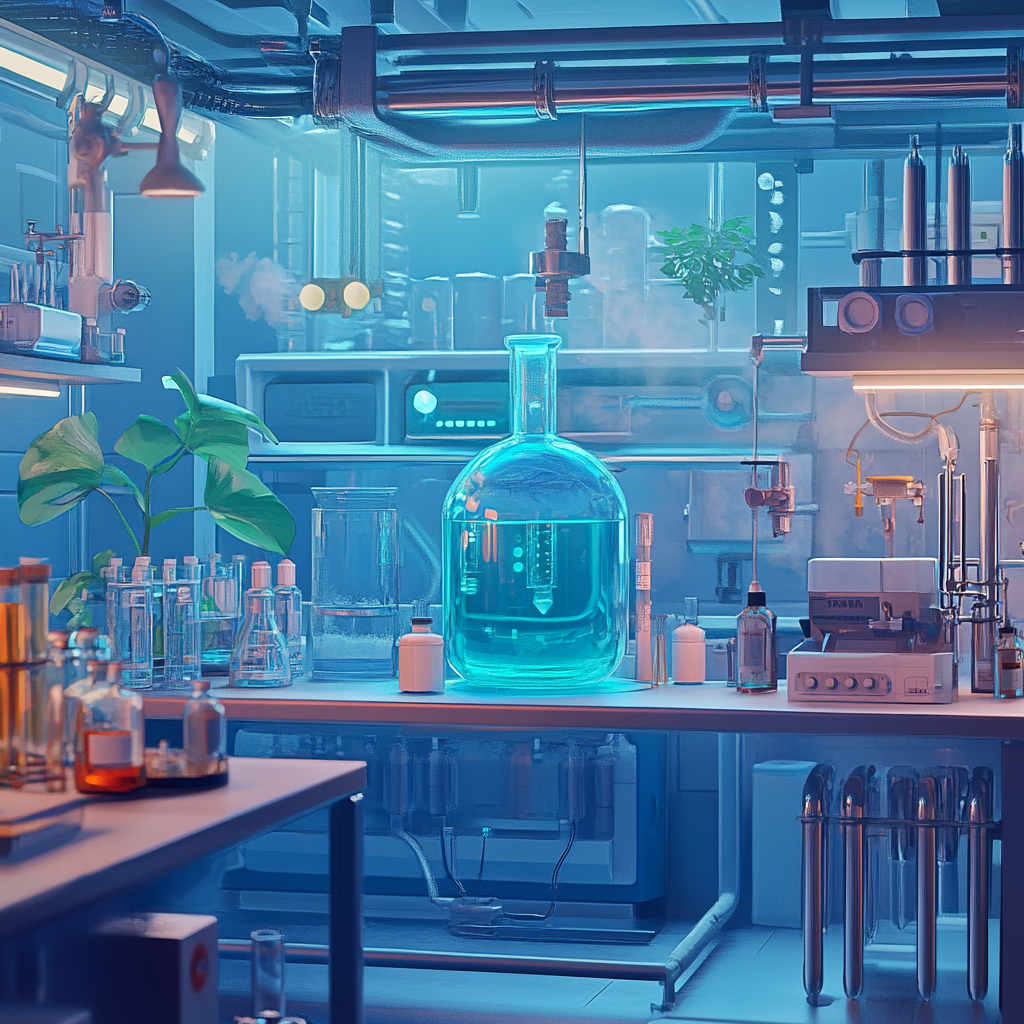
Sugar-derived catalyst boosts plastic recycling and hydrogen production
In a world tangled in plastic waste and desperate for sustainable energy, a new champion has emerged from the laboratories of the Daegu Gyeongbuk Institute of Science and Technology (DGIST). Researchers, led by the visionary Professor Chiyoung Park, have thrown a sugar-coated lifeline into the murky depths of environmental despair—introducing a catalyst derived from sugar to revolutionize plastic recycling and hydrogen production. In layman's terms, this is a game-changer that promises to tidy up our planet while also fueling our future.
Let’s delve into the brilliance of this sugar-derived catalyst, a jaw-droppingly innovative creation that has made chemists across the globe sit up and take notice. At its core, this catalyst is no sorcerer's spell; it’s a combination of cyclodextrin (we’ll call it CD for brevity), molybdenum disulfide (MoS₂), and fullerene (C₆₀). Each of these components plays a crucial role in this beautiful concoction meant to tackle some of our planet's most pressing challenges.
First on our list is cyclodextrin, that lovely cyclic molecule extracted from sugar. Not only does it sound like something straight out of a chemistry wizardry class, but it is also foundational to our catalyst’s performance. CD acts like a key, unlocking the potential to break down barriers in plastic recycling like an experienced locksmith tackling an old, stubborn lock.
Next, we have molybdenum disulfide, which we can think of as the trusty sidekick in this dynamic duo—or trio, if we’re being technical. Known for its remarkable catalytic properties, MoS₂ supercharges the reaction, enhancing efficiency as it embarks on its recycling mission. And lastly, we can't forget fullerene, that fascinating carbon-based molecule resembling tiny soccer balls. Fullerene simply makes everything more efficient, kind of like how the right playlist can transform a mundane workout into a euphoric sweat session.
But here’s where the magic happens. This sugar-fueled catalyst isn’t just a complex recipe cooked up in a research lab; it’s incredibly easy to produce. Ditch the convoluted and expensive manufacturing processes that resemble a NASA control room launch. Instead, we’re talking about mixing these fascinating ingredients using nothing more than a mortar and pestle—a technique harkening back to simpler times. This simplicity boosts accessibility and scalability. Yes, you read that right—more people can now jump on the eco-friendly bandwagon.
Now let's tackle the elephant in the room: plastic recycling, specifically those pesky engineering plastics laden with all sorts of additives like halogen-based flame retardants. These obnoxious additives make recycling as difficult as trying to untangle a set of Christmas lights after a merry holiday. But fear not! Our sugar-derived catalyst is here to save the day. It effectively decomposes those barriers hindering the recycling process, ensuring that even the plastics made before today's environmental regulations can be salvaged.
If that’s not impressive enough, this catalyst doesn’t stop at plastics; it’s also a powerhouse for hydrogen production. Hydrogen, a clean energy source with the potential to power the future, is often produced through energy-intensive processes that rely on fossil fuels. The combination of our friend MoS₂, the soccer ball of fullerenes, and the sweet benefit of cyclodextrin enhances photocatalytic reactions, making hydrogen production not only efficient but also sustainable. It's like finding a money-making hack that also helps the environment. Who wouldn’t want that?
But wait—there's more! This isn’t merely a fleeting success story in the realm of plastic recycling and energy production. It’s also a testament to the extraordinary potential of supramolecular chemistry to smash through the walls of conventional industrial limitations. Professor Chiyoung Park isn’t just waving a flag of victory; he’s casting a spotlight on how innovative chemistry can provide solutions where old approaches have fallen short. The team’s plan to dive deeper into environmental remediation technologies using these molybdenum disulfide catalysts looks promising, suggesting that they’re just getting started on their journey.
As we reflect on this significant breakthrough—our sugar-derived catalyst—it’s clear that we are not just dealing with chemistry here; we're wagering our hopes on a bold step toward sustainable energy and responsible waste management. Now, imagine a world where plastic isn’t just a liability but a potential resource. A world where hydrogen can transition us to clean energy—all thanks to a catalyst that draws from the very essence of sweetness.
And so, dear readers, let this groundbreaking research inspire you. The future is bright and brimming with possibilities as we embrace the intelligent marriage of chemistry and sustainability. We've seen how ingenuity and simplicity can waltz together in a dance of innovation, answering environmental challenges with a flourish.
Want to stay up to date with the latest news on neural networks and automation? Subscribe to our Telegram channel: @channel_neirotoken. Remember, being well-informed is the first step toward a more sustainable and technologically advanced future. So, hop on this journey—because every step counts!

